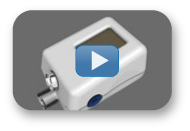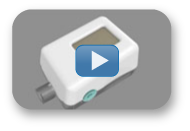Compass Thoracentesis (measures pleural pressure)
 — The Compass Thoracentesis makes Pleural Manometry Easy
— The Compass Thoracentesis makes Pleural Manometry Easy
Quickly diagnose trapped lung
Real time pressure monitoring enables the user to determine if there is a large (negative) change in pressure during pleural fluid removal. Diagnosis of trapped lung helps facilitate further patient management.
Large volume thoracentesis
Recent evidence suggests that large volumes can be safely drained if pleural pressures are monitored, as long as the procedure is terminated if the patient develops anterior chest pain or the pleural pressure drops below -20 cm H2O(1,2).
Re-expansion pulmonary edema
Maintaining pleural pressure above -20 cm H2O can significantly reduce the risk of re-expansion pulmonary edema. RPE, which currently develops in about 1% of thoracentesis procedures, is not only very expensive to treat but is also frequently lethal with a mortality rate close to 20%(2,3).
Treatment success
A measurement of lung elastance (by way of pressure) has been proven to be a predictor of successful pleurodesis(4).
| Catalog Number | Description |
| CTHR002 | Compass Thoracentesis |
For ordering information, contact a Centurion Medical Products sales representative.
800-358-4084
(1) Huggins, J.T. & Doelken, P. Pleural Manometry. Clin Chest Med,2006.
(2) Feller-Kopman, et. al. Large-Volume Thoracentesis and the Risk of
Reexpansion Pulmonary Edema. Annals of Thortacic Surgery, 2007.
(3) Alazami, S., et al. Incidence and Outcomes of Reexpansion Pulmonary Edema in a Heterogenous Population with Lung Collapse. Am J Respir Crit Care, 2010.
(4) Lan, R; Lo, S; Chuang, M. Elastance of the Pleural Space: A Predictor for the Outcome of Pleurodesis in Patients with Malignant Pleural Effusion. Ann Intern Med, 1997

